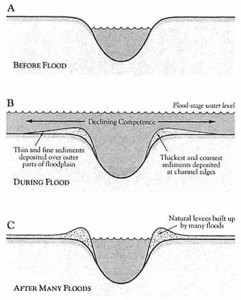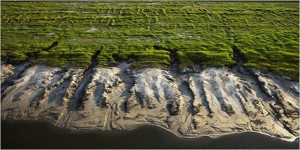Levees as Infrastructural Ecological Systems
Humans have attempted to conquer the problems of changing water levels for thousands of years. One of the oldest weapons they’ve used against the rivers and oceans is the levee, also known as a dike. A levee is simply a man-made embankment built to keep a river from overflowing its banks or to prevent ocean waves from washing into undesired areas.
Because a levee is only as strong as its weakest point, the height and standards of construction have to be consistent along its length. Some authorities have argued that this requires a strong governing authority to guide the work, and may have been a catalyst for the development of systems of governance in early civilizations.
A levee is typically little more than a mound of less permeable soil, like clay, wider at the base and narrower at the top. These mounds run in a long strip, sometimes for many miles, along a river, lake or ocean. Levees along the Mississippi River may range from 10 to 20 feet tall. In Holland, they can top 30 feet. But there’s no set height for levees. Their measurements vary according to the storms the area receives, even if those storms occur only once every hundred or thousand years.
In New Orleans, the levees perform dual duties: On one side of the city, levees protect against floods from the Mississippi River, and on the other side, they help to keep Lake Pontchartrain at bay. In parts of the Netherlands, dikes stop ocean waters from reclaiming thousands of miles of land, much of which is either at or below sea level. The windmills of Holland pump water from behind the dikes and back out to sea to keep the land dry. Living by the water provides humans with a number of advantages: fertile farm land, transportation, trade and hydroelectric power. Levees allow humans to enjoy these assets without fear of flooding, but humans have a bad habit of forgetting just how powerful Mother Nature really is.
There are two different types of levees: natural and artificial. Natural levees form when a given area is flooded and the water recedes. The water carries a large amount of sediment that is ultimately deposited in different locations based on the size of the particle. The lighter particles tend to settle farther from the river, while the heavier particles settle closer to the river. Overtime, this will create a natural levee that will continue to grow with every flood. Artificial levees’ main purpose is to prevent flooding of the surrounding land. They often confine the flow of the river and therefore increase the height and rate of water flow.
Sources:

